Aaaaaay-o! Aaaaaay-o! Why Live Aid was the greatest show of all
Bob Geldof’s global humanitarian gig united the world’s biggest stars for an unforgettable fundraiser 35 years ago. But behind the camera it was chaos, says Mark Beaumont
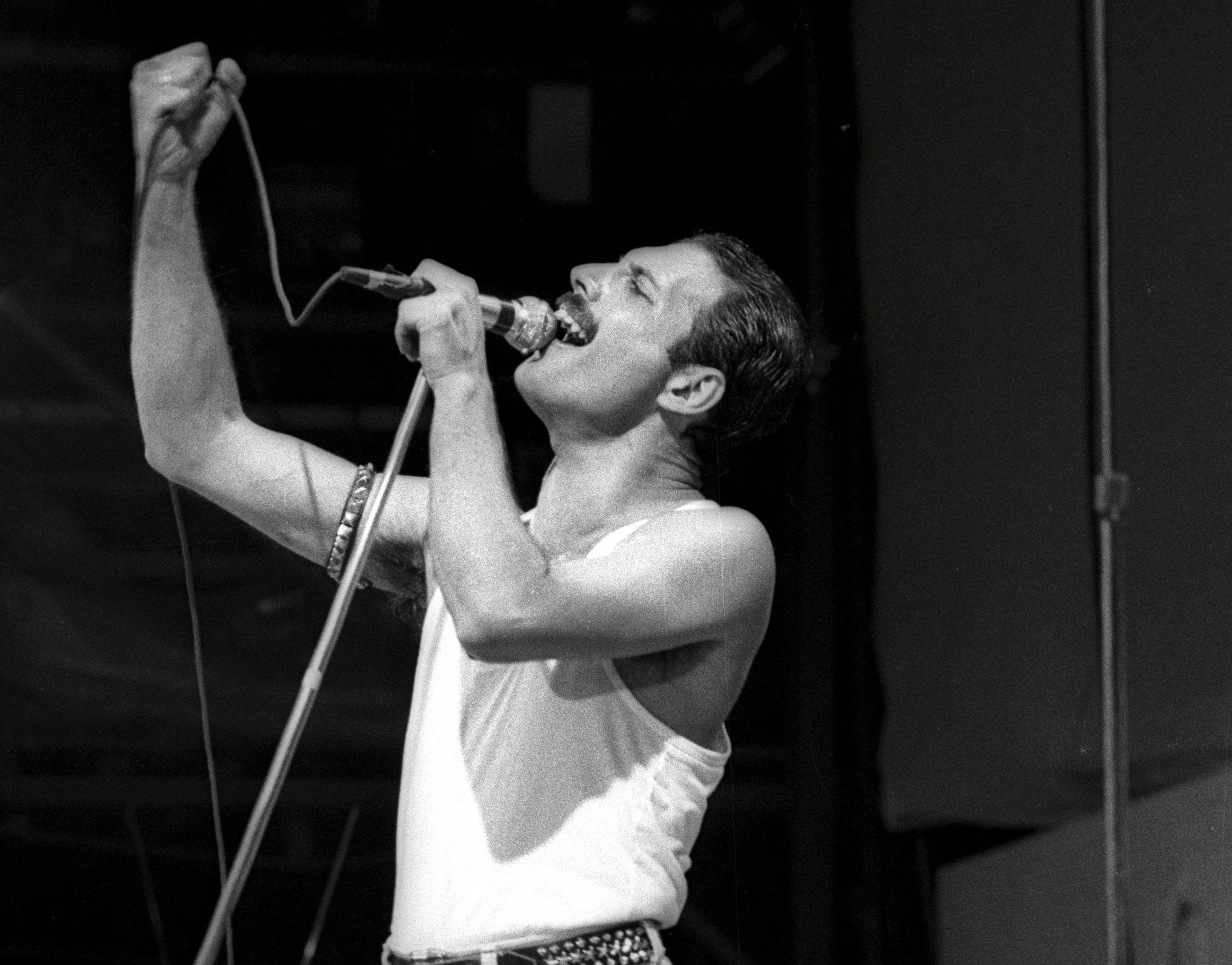
Your support helps us to tell the story
From reproductive rights to climate change to Big Tech, The Independent is on the ground when the story is developing. Whether it's investigating the financials of Elon Musk's pro-Trump PAC or producing our latest documentary, 'The A Word', which shines a light on the American women fighting for reproductive rights, we know how important it is to parse out the facts from the messaging.
At such a critical moment in US history, we need reporters on the ground. Your donation allows us to keep sending journalists to speak to both sides of the story.
The Independent is trusted by Americans across the entire political spectrum. And unlike many other quality news outlets, we choose not to lock Americans out of our reporting and analysis with paywalls. We believe quality journalism should be available to everyone, paid for by those who can afford it.
Your support makes all the difference.In the swarming backstage scrum of Wembley Stadium, rock’n’roll supernovas collided. A sweaty post-gig Pete Townshend embraced Elton John, en route to the stage. Freddie Mercury accosted Bono by the makeshift Hard Rock Cafe constructed for the occasion. David Bowie and Paul McCartney mock-boxed for the cameras between luxurious ferns. On one dressing room door, a sign listed the three acts scheduled to use it during the day, then the mysterious “Ensemble Male”. A space reserved, rumours abounded, in case it was needed by the surviving, reunited Beatles.
Out front, history was in the making. “It’s 12 noon in London, 7am in Philadelphia,” BBC presenter Richard Skinner had told an audience of almost 2 billion across the globe, 40 per cent of the Earth’s 1985 population. “And around the world it’s time for Live Aid.” The Coldstream Guards struck up the royal salute, Status Quo piled into “Rockin’ All Over the World” and, 35 years ago today, the biggest, most ambitious concert that had ever been staged crashed onto 500 million TV sets from New York to Tokyo, Moscow to Montreal. By the time it wrapped up 16 hours later with an emotional rendition of “We Are the World” at the JFK Stadium in Philadelphia, legends had been created and £50m raised for famine relief. When Freddie Mercury, at the climax of his famous call-and-response “Aaaaaay-o” segment, struck what would become known as The Note Heard Around the World, he couldn’t have imagined it would resonate with a global tone of such rich compassion.
With a nebula of stars queueing up to perform at two simultaneous stadium shows in London and Philadelphia, Live Aid wasn’t just the greatest gig on Earth, it was the birth of music as a formidable humanitarian and philanthropic force, a defining peak of the Eighties musical pomp and splendour and the culmination of rock’s decades-long expansion to critical mass. It was also a gigantic leap of faith built from Bob Geldof’s determination to hustle, bully and cajole the greatest show he could imagine into reality.
Following the 3 million-selling success of Band Aid’s “Do They Know It’s Christmas?” the previous year, which became the fastest selling UK single ever and raised £8m for Ethiopian famine aid, the perception might well have been that Geldof now possessed a golden Filofax and had the biggest names in rock at his beck and call. In fact, when Boy George suggested organising a star-studded concert after Geldof and assorted Band Aid alumni joined Culture Club for an encore of the single at Wembley Arena in December 1984, it took every ounce of Geldof’s single-minded guile and resolve to pull it off.
“He was a charismatic leader,” says Live Aid’s UK production manager Andrew Zweck today. “He was inspiring, he motivated us. The greatest legacy of Live Aid for me personally, is the example of how Bob Geldof’s leadership demonstrated the power of the individual. How the voice and action of just one person could start a movement that could make a difference.”
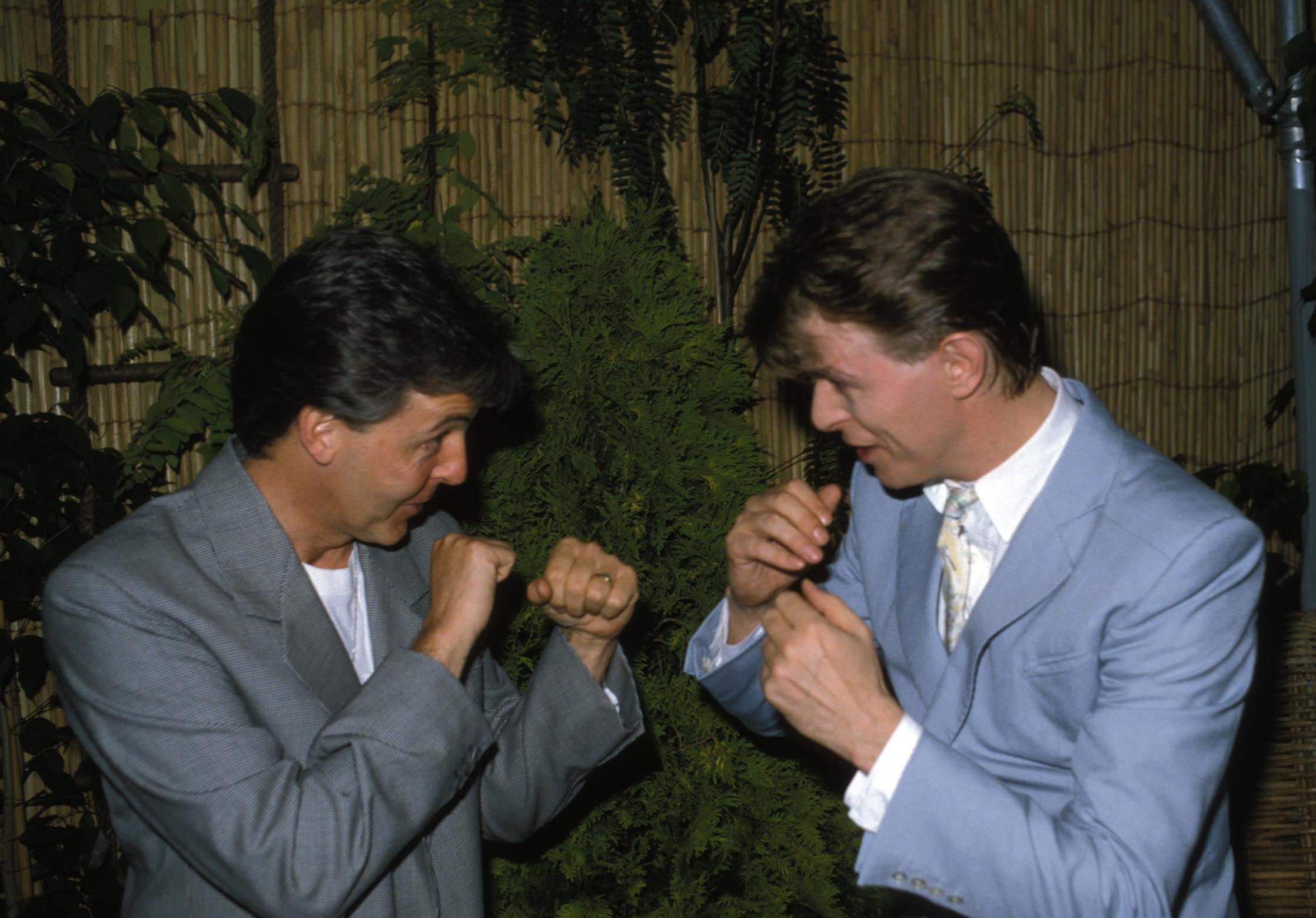
First stop, promoter Harvey Goldsmith’s office. “I didn’t really get a chance to say no,” Goldsmith told The Observer in 2004. “Bob arrived in my office and basically said, ‘We’re doing this’.” Back in 1986, he told Rolling Stone, “Bob said this should be the definitive statement for the music business. He said we ought to do a show in England and one in America as well. The idea was to do a worldwide television hook-up and raise money with a telethon … He asked, ‘Is it possible?’, and that’s when the [organisational] nightmare started.”
Goldsmith set about hiring Wembley Stadium and his US counterpart Bill Graham secured the 100,000-capacity JFK Stadium for the American leg of the show – all at a charity discount and with everything from hotel rooms to flights, hire cars and food donated; a show that would usually have cost $20m came in at a fifth of the price. And Geldof entered into the most high-stakes game of bluff in his life. “He’d say to Bowie, ‘Queen are doing it, Elton’s doing it’ and he was making it up,” says Zweck. “Then he’d say to Elton ‘oh yeah, Bowie’s definitely in, I’ve spoken to him’. He played that game very successfully in the end. Bob was really good at that. He was running at 100mph most days, all kinds of ideas and demands flying in all directions.”
“When I announced it, the only one who was dithering, as ever, was Bryan Ferry,” Geldof himself told The Observer. “So I just said, ‘... and Bryan Ferry.’ And he rang to say, ‘I didn’t say “yeah”.’ I said, ‘Well, say no, then. You’re the one who can announce it though.’”
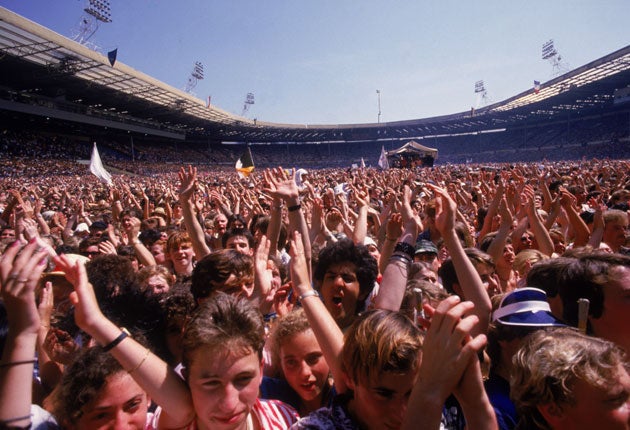
Ferry, it turns out, wasn’t the only artist dithering. When Geldof officially announced his “global jukebox” at press conferences in London and New York on 10 June, he reeled off a line-up that was significantly more TBC than he made out. Bowie, Elton, The Who, Eric Clapton, U2, Madonna, McCartney, Robert Plant, Dire Straits, Phil Collins and a plethora of New Romantic chart-pop acts of the day were certainly all signed up. But hearing their names among the roll-call came as a surprise to the likes of Mick Jagger, Paul Simon, Huey Lewis, Tears For Fears and Stevie Wonder, most of whom were still undecided about appearing or, in Wonder’s case, had already declined. “Mick was a bit surprised,” Jagger associate Tony King told Rolling Stone. “But he wasn’t annoyed. He thought, ‘Okay, now I’ve actually got to do something.’” Within weeks Jagger was in Goldsmith’s office, discussing whether it would be possible for him to perform a transatlantic duet with Bowie, or for one of them to perform from space.
As the A-listers piled up, so did the offers. Although some in the UK team suspected Graham was warning off some big names, such as Paul Simon and Whitney Houston, uncertain that Geldof could pull it off, Graham soon had 100 major artists asking to perform and the world’s most famous musicians jostling for prime-time slots. Graham had to turn down arena-filling acts such as Foreigner and Yes even when he’d shortened sets and brought the US show’s start time forwards from noon to 9am to fit more performers in.
The press duly noted that, considering this was a concert for African famine relief, Geldof had struggled to find black acts for the bill. Diana Ross and the Pointer Sisters were on tour, Donna Summer studio-bound, Michael Jackson, according to his publicist Norman Winter, “immersed in a couple of heavy projects… He’d liked to have done the show, but it’s impossible.” Even Live Aid’s suggestion of jetting him in for a duet with Jagger or McCartney wouldn’t fly: “He and Paul work very well together, but he has other commitments.” When Graham learnt that someone in his New York office had turned down an offer to play from Run-DMC, he swiftly rang to rectify the error.
Nonetheless, there were high-profile absentees. Prince, one of the most famous no-shows for the recording of “We Are the World”, sent a pre-recorded video to be screened in Philadelphia. Bruce Springsteen, who’d played at Wembley the week before, left his stage for the event’s use but didn’t feel he could stop his band taking a well-earned vacation. Billy Joel declined to play, fearing that a solo piano set would be lost in a screaming stadium. Huey Lewis pulled out of the Philadelphia show, citing concerns that the money raised by the associated charity singles wasn’t reaching the people who needed help. Cliff Richard later stated that he was unable to perform, although Geldof couldn’t remember asking him.

Camped out in an office at Phonogram Records in the weeks before the show, Geldof hustled, ruthlessly, right up to the last minute. He drove up the price of licensing the broadcast to NBC in America by pretending rival US channels CBS and NBC were interested (they weren’t), and threatened to pull the broadcast from Germany unless it agreed to run a telethon. A lot of tables were thumped long before he famously demanded the BBC viewing audience “give me the money”.
It got results. The night before the main event, Eric Clapton, Simple Minds’ Jim Kerr and Bryan Adams were spotted in the bars and restaurants of the Philadelphia Four Seasons hotel, where Ozzy and Judas Priest’s Rob Halford worried, over tea, if they might disintegrate when playing in sunlight. Meanwhile hordes of Duran Duran fans besieged the Palace Hotel across the road, where it had laid on a sumptuous pool party late into the night for performers including Mick Jagger, Hall & Oates and Robert Plant. Jagger was fresh from his raunch-heavy rehearsal at the stadium with Tina Turner: “We both had to say that we wouldn’t go too far, the way we normally would at a show,” he told Rolling Stone. “MTV might stay on, but I don’t know about ABC.”
One of the few performers not at the Palace party was Bernard Watson. An amateur folk singer just out of high school, Watson had driven to Philadelphia from Miami Beach determined to play at the biggest show on earth. He hunted down Bill Graham to give him a tape and slept in his car outside the stadium for days. Graham, who had liked the tape, eventually went out to meet him. “You mind opening for Joan Baez?” he asked, and put him first on the bill, before the cameras rolled. Charity was in the air.
Geldof himself spent the night before the show sleeping on towels because of night sweats, terrified no one would show up. And, at the stadium, Zweck had his own concerns. “It was intense,” he recalls. “It was brand new. How do you put on 22 acts in one day down to the second? The BBC had written this time schedule flip-flopping with the broadcast, and it said ‘at 7.22pm The Who will leave the stage’ and we thought ‘how the hell are we gonna stick to a schedule like that?’ So there was a lot of concern. I remember one week previous being very scared and phoning every experienced rock’n’roll production manager in the world saying ‘quick, wherever you are, jump on a plane, come to Wembley, we’re out of our depth!’ None were available, they were all in Philadelphia. But we put a team of volunteers together and pulled it off.”
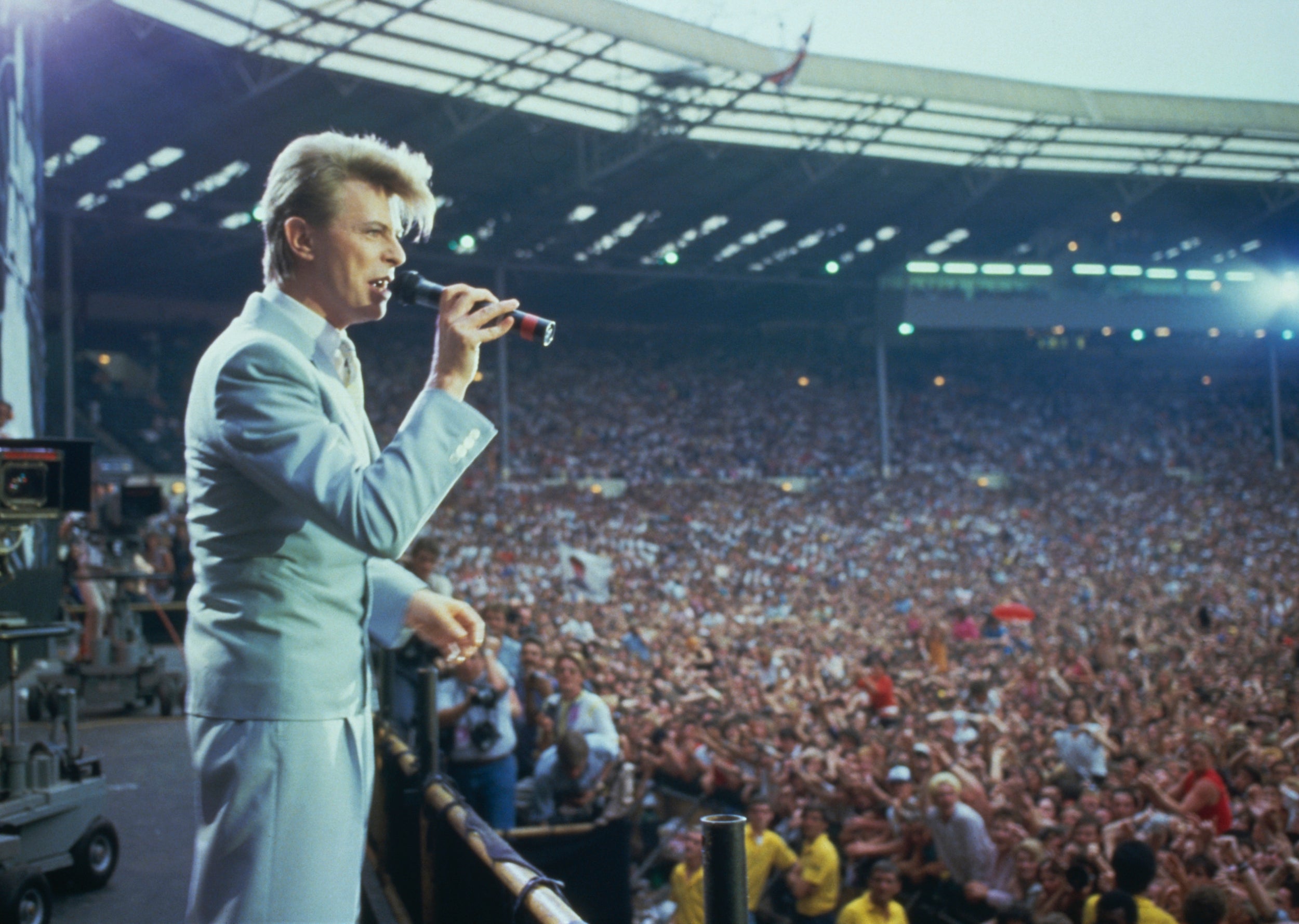
And how. As the crowds poured in beneath Wembley’s famous twin towers and Noel Edmonds’ helicopter company ferried the stars from Battersea to a nearby cricket ground where the local teams continued their tournament between arrivals (Edmonds claimed that Bowie’s management insisted, as a prank, that he would only fly in a blue helicopter), 13 July arrived with the air of history in the making. Everyone from Elton to Adam Ant lined up in the banquet hall to greet Prince Charles and Diana, and Geldof, Queen and Bowie took seats with them in the royal box to watch the opening acts, basking in the phenomenal buzz of the crowd.
“There was a fantastic atmosphere, positive and joyous, everyone was supporting each other,” says Zweck, who was overseeing operations from side of stage. “The sun was shining, it was 12 noon, Status Quo started rocking and we were walking on air. You just knew that it was super special.”
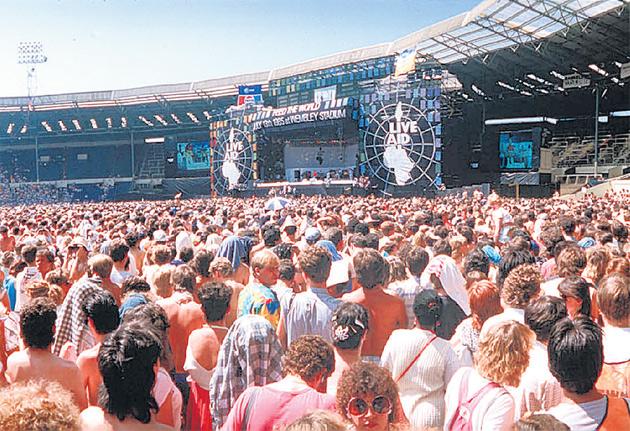
Geldof took an early slot with The Boomtown Rats. “It was only when I walked on stage with the band that the romance of it and the hugeness of it got to me,” he said. “That moment when I pull up sharp on ‘I Don’t Like Mondays’ – ‘and the lesson today is how to die’ – time became elastic, like I stood there for hours and my hand just stayed in mid-air.”
Geldof stole the afternoon, and it was a tough afternoon to steal. By 3.20pm the crowd had already been graced with sets by some of the biggest chart names of the decade – Adam Ant, Ultravox, Spandau Ballet, Nik Kershaw, Sade and Elvis Costello, leading Wembley in a rendition of “old northern English folk song”, “All You Need Is Love”. And here, while the event was still warming up, were Sting and Phil Collins tag-teaming Police hits with “Against All Odds (Take A Look At Me Now)” and “In The Air Tonight”. Collins raced straight from the stage to Edmonds’s helicopter, bound for Heathrow to catch a Concorde flight to the US where he would join in the Philadelphia leg. On board Concorde he ran into Cher, who was oblivious to the whole event. “She asked what was going on,” Collins told The Observer. “I told her about Live Aid and she asked whether I could get her on. I told her to just turn up.”
Arriving in Philadelphia, Phil Collins walked into a scene of sheer pandemonium, a tsunami of stars. Backstage, The Beach Boys and Crosby, Stills and Nash were being swarmed by photographers and TV crews. Madonna and Sean Penn, inseparable to the point of reportedly going into a one-person portable toilet together, shunned the press, preferring to hang out in their trailer with Jim Kerr and Chrissie Hynde. “This thing today is like 100,000 Ed Sullivan Shows,” Tom Petty quipped to Rolling Stone. “It was bedlam backstage,” Bryan Adams told The Observer. “I remember I walked up the stairs to the stage and Yoko Ono passed me. When I got to the top of the stairs someone said that I was to start after the gentleman introduced me. That gentleman was Jack Nicholson.”
After a guest spot with Clapton and a solo set at JFK Stadium, Collins stuck around for what he thought was going to be a low-key performance with his old friends Jimmy Page and Robert Plant, but which had been upgraded to a Led Zeppelin reunion. What followed would be described as “one of the worst rock’n’roll reunions of all time”. Plant’s voice was shot, Page’s guitar was out of tune and Collins’s drumming was unregimented at best.
“Robert told me Phil Collins wanted to play with us,” Page later explained to The Scotsman. “I told him that was all right if he knows the numbers. But at the end of the day, he didn’t know anything. We played ‘Whole Lotta Love’, and he was just there bashing away cluelessly and grinning. I thought that was really a joke.” It was, Plant said elsewhere, “a f***ing atrocity for us … It made us look like loonies.”
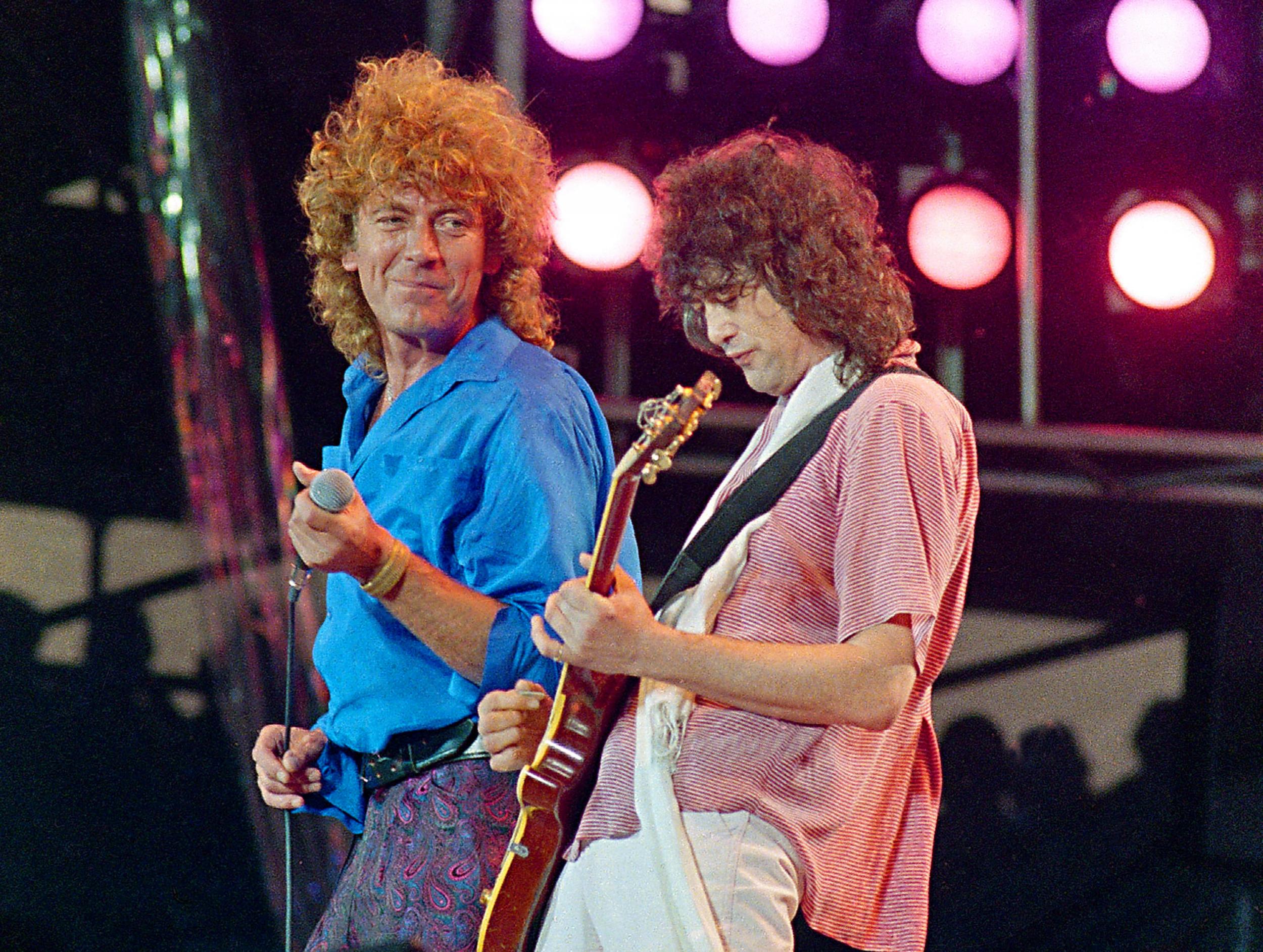
“It wasn’t my fault it was crap,” Collins told Ultimate Classic Rock. “If I could have walked off, I would have. But then we’d all be talking about why Phil Collins walked off Live Aid – so I just stuck it out.”
The band have refused to allow the footage to be screened since, and a jet-lagged Collins swiftly escaped to his New York hotel, arriving just in time to catch Cher joining in the final massed singalong of “We Are the World” on TV.
Back in London, Wembley wasn’t without its own hiccups. Bryan Ferry began his set to find his microphone was broken, his guest David Gilmour’s guitar wasn’t working and his drummer had destroyed a drum skin on the very first strike. The onstage traffic light system, designed to give acts a two-minute warning before the plug was pulled, got mysteriously smashed during The Who’s raucous performance. And Paul McCartney’s surprise rendition of “Let It Be” towards the end of the show was famously inaudible for the first two minutes.
“The crew got tired,” says Zweck. “They were plugging his vocal into the green channel and pulling up the fader of the blue channel so people couldn’t hear. We’d had meetings in his office, they said ‘the technical thing is really important’ and I said ‘don’t worry, we’ve got the best people in the world, it’s all gonna be great’ and sadly it wasn’t. I’ve always felt embarrassed about that.”
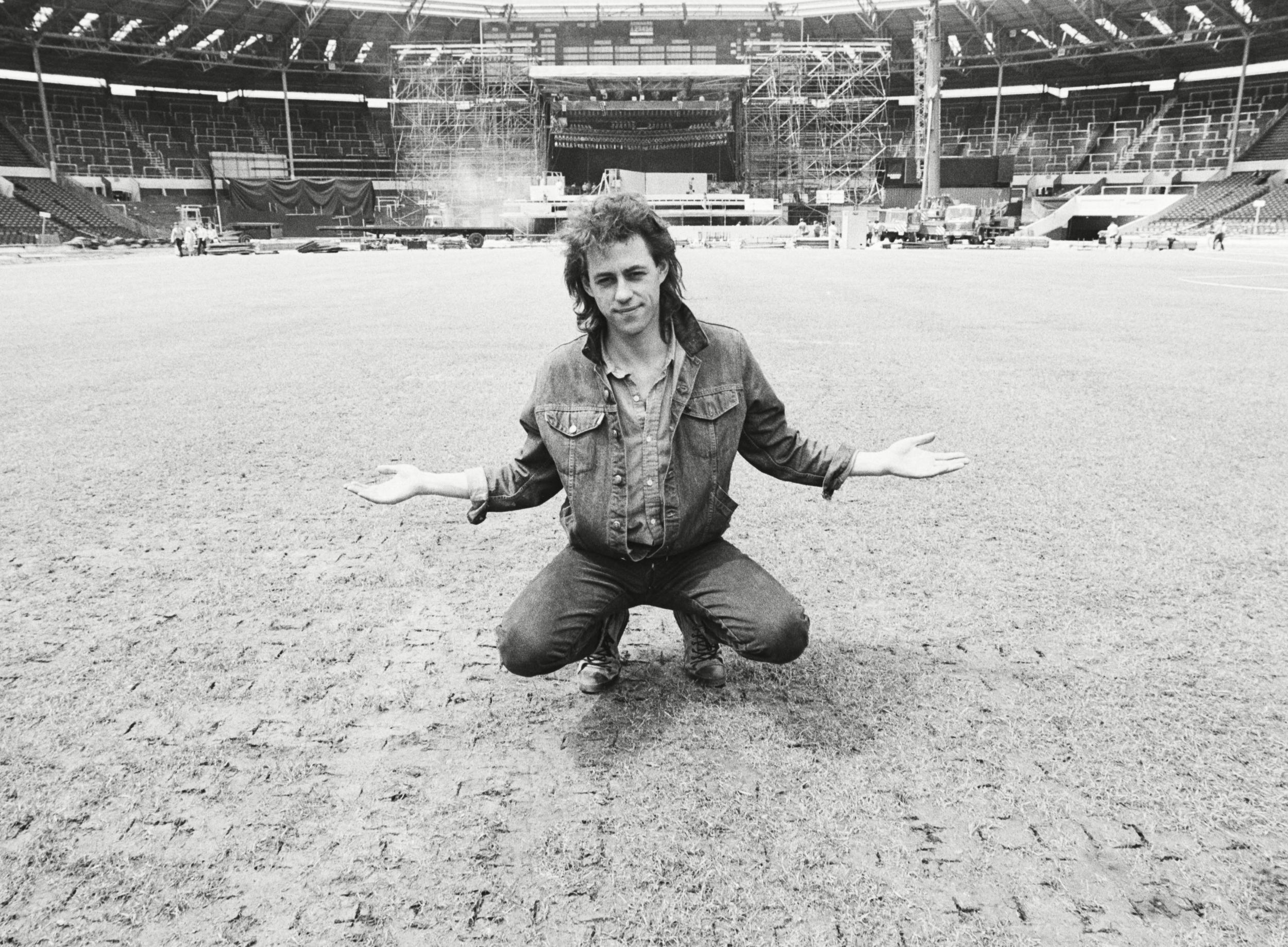
None of which distracted from an event of historic impact and significance, and some of the most memorable live moments of the decade. Then a lesser-known act, U2’s set proved a breakthrough, even though their closing song “Pride (In The Name Of Love)” had to be cut as Bono, sporting one of the Eighties’ lushest mullets, noticed 15-year-old Kal Khalique being suffocated as the crowd surged towards him (at Bono’s beckoning) and the band elongated “Bad” to 14 minutes while he leapt off the stage to help rescue and dance with her; Khalique later claimed Bono saved her life that day.
Bowie also cut the song “Five Years” from his set in order to screen a video of footage from the famine accompanied by The Cars’ “Drive”, a film so moving that phone donations – which had reached £300 per second when a tired and emotional Geldof had visited the BBC booth to demand viewers empty their pockets – rocketed further. Speaking to The Tube backstage after his performance, Bowie was asked about his plans for the rest of the evening. “I’m going to go home,” he said straight down the camera, “and I’m going to have a really good f***.”
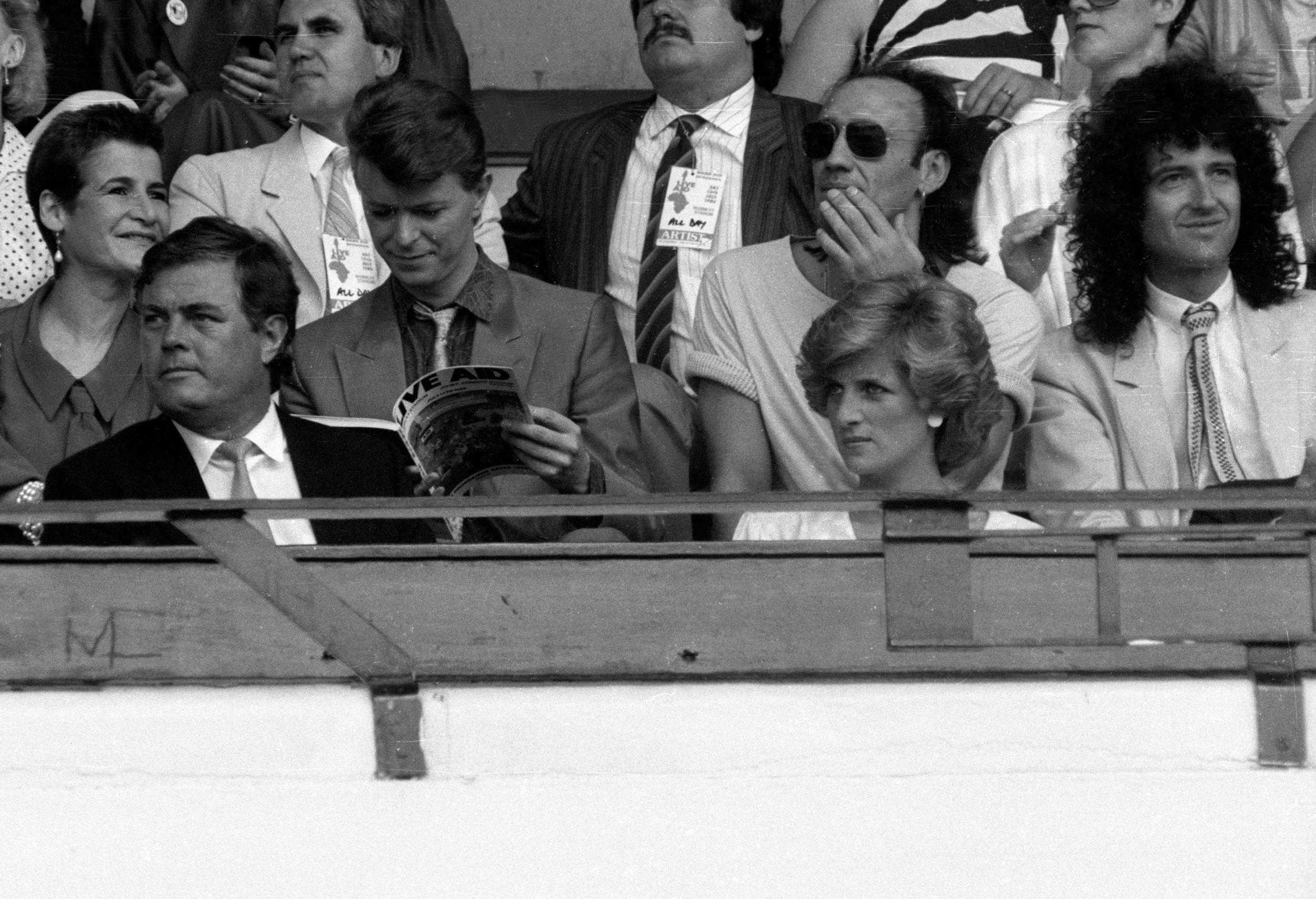
It was Queen’s magical 22-minute set, however, which has come to epitomise Live Aid. Introduced by Mel Smith and Griff Rhys Jones dressed as policemen investigating a noise complaint from Belgium, Mercury jogged onstage for a career-defining performance: the piano intro of “Bohemian Rhapsody” gave way to stadium-wide cult clapping for “Radio Gaga”, “We Are The Champions” turned Wembley into a sea of swaying arms and Mercury bestrode the event like a moustachio’d Colossus with a baton-mike sceptre. “I remember a huge rush of adrenaline as I went on stage and a massive roar from the crowd,” Brian May told The Observer, “and then all of us just pitching in. Looking back, I think we were all a bit over-excited, and I remember coming off and thinking it was very scrappy. But there was a lot of very good energy too. Freddie was our secret weapon. He was able to reach out to everybody in that stadium effortlessly, and I think it was really his night.”
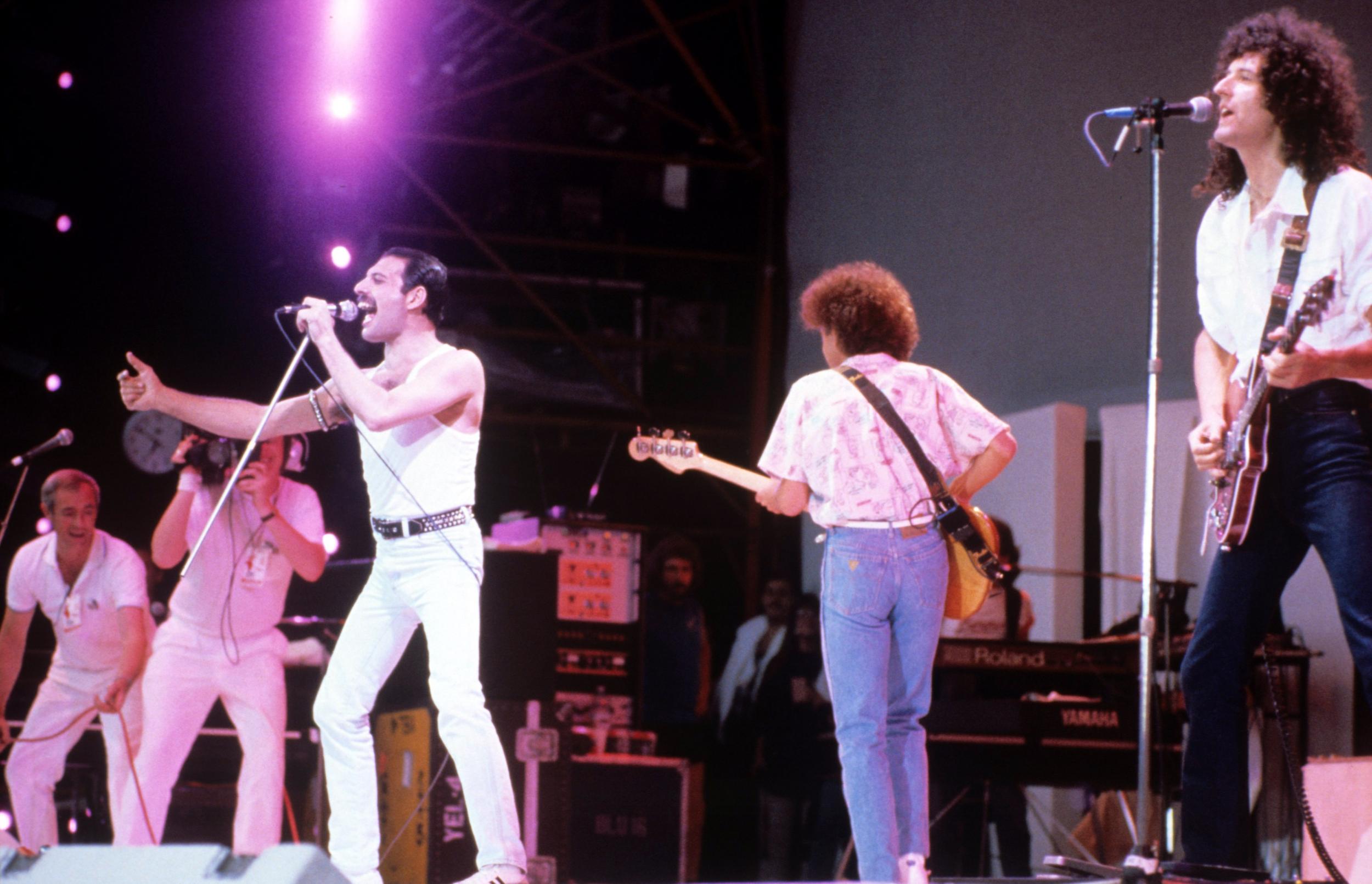
As for Geldof, it was a stressful and highly strung experience. His mood ricocheted throughout the day, aggravated by pain from a sprained back that kept him slightly hunched. By the time he was gathering a stage full of stars for the finale of “Do They Know It’s Christmas?” he was thoroughly exhausted, carried shoulder-high by Townshend at the show’s end towards a much-needed rest.
In Philadelphia, the party raged on. At 1am in a second-floor suite at the Palace Hotel, Keith Richards, Ronnie Wood and Bob Dylan chatted with Jimmy Page and Stephen Stills about their various onstage mishaps. “Fun?” said Dylan of his three-song set with Richards and Wood. “No, we couldn’t hear anything.”
“Would have been better if we’d gotten paid,” Richards joked to Rolling Stone. Indirectly, though, most of them did. As the CD era was dawning, sales of the acts involved with Live Aid soared. Collins, Madonna, U2 and Queen saw their records catapulted back into the charts, and one of the most immediate legacies of the show was its cementing of a top tier of heritage musicians who would hob-nob with Charles and Diana at similar events over the coming years – a rock’n’roll royalty of their own.
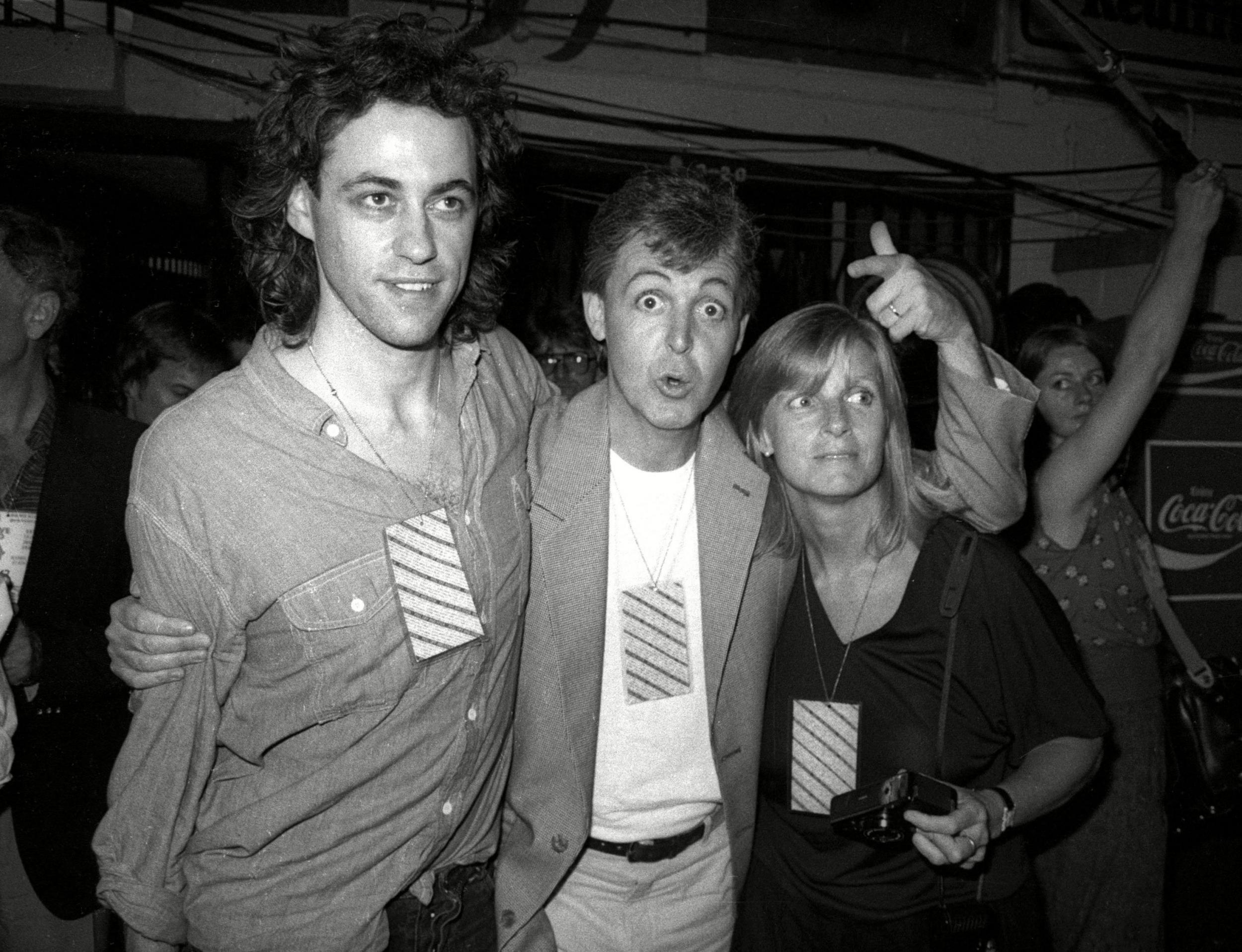
Financially, the success of the event would come into question. Huey Lewis was right to be concerned about how effectively the money raised was being used to help the victims of famine. In the wake of the Band Aid single, relief food was left to rot in Ethiopian docks as the country’s dictatorial leader Mengistu Haile Mariam – who had helped to bring on the famine by napalming farmland – prioritised the unloading of weapons for his four internal conflicts. The $127m raised by Live Aid helped to break the trucking cartel that was stopping relief getting into the country but, according to investigations by Spin in 1986, much of it was funnelled through Mengistu’s government, who used the money to purchase hi-tech weaponry from the Soviet Union and the food to lure his people into a brutal resettlement programme that killed hundreds of thousands. “I’ll shake hands with the devil on my left and on my right to get to the people we are meant to help,” Geldof said in response to warnings from aid group Medicins Sans Frontiers. But both devils were channelling his charity away from the starving.
The beneficial legacy of Live Aid, however, cannot be underestimated. In its wake governments woke up to the swell of public support for humanitarian global relief and began to place it at the heart of foreign policy decisions. “We took an issue that was nowhere on the political agenda,” Geldof told The Guardian, “and, through the lingua franca of the planet – which is not English but rock’n’roll – we were able to address the intellectual absurdity and the moral repulsion of people dying of want in a world of surplus.” The ripple effect of Live Aid, in terms of lives indirectly saved, is incalculable.
“What I’ve seen over the 35 years,” says Zweck today, “is the awakening of the social conscience of the music industry, with artists realising they had a power and they could do good with that power. We saw after that Bono and Sting, Roger Waters, using their voice, their position and their platform to push for causes they believe in. It would change people’s perspective of charity and mobilise public opinion to such an extent that government policies in the developing world and other areas would be altered thereafter. You can look back at Live Aid and see that’s where it started. Governments now listen, and that all started with a pop concert.”
Join our commenting forum
Join thought-provoking conversations, follow other Independent readers and see their replies
Comments